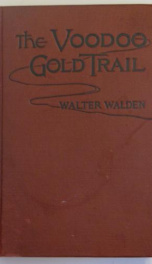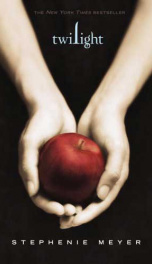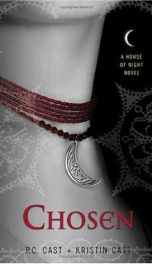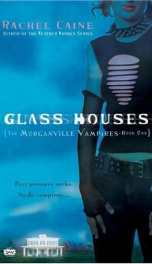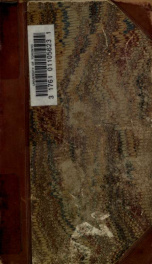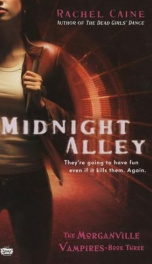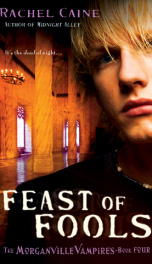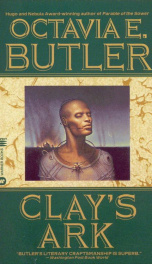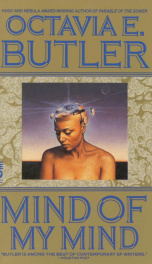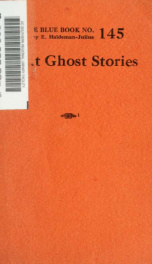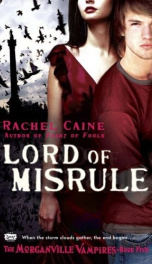Cram Ralph Adams
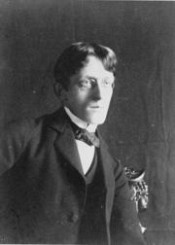
Ralph Adams Cram FAIA, (December 16, 1863 - September 22, 1942), was a prolific and influential American architect of collegiate and ecclesiastical buildings, often in the Gothic style. Cram was born on December 16, 1863 at Hampton Falls, New Hampshire to the Rev. William Augustine and Sarah Elizabeth Cram. He was educated at Augusta, Hampton Falls, Westford Academy and Exeter.[1] While his father was a Unitarian minister, he called himself an agnostic in his youth. Cram moved to Boston in 1881, at age 18, and spent five years in the architectural office of Rotch & Tilden,[2] after which he left for Rome. During an 1887 Christmas Eve mass in Rome, he had a dramatic conversion experience. For the rest of his life, he remained a fervent Anglo-Catholic who self-identified as High Church Anglican. In 1900 Cram married Elizabeth Carrington Read at New Bedford. She was the daughter of Captain Clement Carrington Read C.S.A. and bore him two children, Mary Carrington and Ralph Wentworth.[1] Cram and business partner Charles Wentworth started business in Boston in April 1889 as Cram and Wentworth. They'd landed only four or five church commissions before they were joined by Bertram Goodhue in 1892 to form Cram, Wentworth and Goodhue. Goodhue brought an award-winning commission in Dallas (never built) and brilliant drafting skills. Wentworth died in 1897 and the firm's name changed to Cram, Goodhue & Ferguson to include draftsman Frank Ferguson. Cram and Goodhue complemented each others' strengths at first but shifted into competition, sometimes submitting two differing proposals for the same commission. The firm's win of the United States Military Academy at West Point project in 1902 was a major milestone in their career, and it meant the establishment of the firm's New York office, where Goodhue would preside, leaving Cram to operate out of Boston. Cram's acceptance of the Cathedral of St. John the Divine commission in 1911 (on Goodhue's perceived territory) heightened the tension between the two. Close attention can attribute most projects to one partner or the other, based on the visual and compositional style and the location, but the strongest work is the most integrated. St. Thomas Church in New York City is the last example of their collaboration. Goodhue began his solo career on August 14, 1913. Cram and Ferguson continued with major church and college commissions through the 1930s. The successor firm is HDB/Cram and Ferguson of Boston. A leading proponent of disciplined Gothic Revival architecture in general and Collegiate Gothic in particular, Cram is most closely associated with Princeton, where he was awarded a Doctor of Letters[1] and served as Supervising Architect from 1907 to 1929. For seven years he headed the Architectural Department at Massachusetts Institute of Technology,[3] Through the 1920s Cram was a public figure and frequently mentioned in the press. The New York Times called him "one of the most prominent Episcopalian laymen in the country". He made news with his defense of Al Smith, saying "I... express my disgust at the ignorance and superstition now rampant and in order that I may go on record as another of those who, though not Roman Catholics, are nevertheless Americans and are outraged by this recrudescence of blatant bigotry, operating through the most cowardly and contemptible methods."[4] As an author, lecturer, and architect, Cram propounded the view that the Renaissance had been, at least in part, an unfortunate detour for western culture.[5] Cram argued that authentic development could come only by returning to Gothic sources for inspiration,[6] as his "Collegiate Gothic" architecture did, with considerable success. He was not altogether inflexible on this point, however, rejecting Gothic for his Rice University buildings in favor of a medieval north Italian Romanesque style more in keeping with Houston's hot, humid climate. A modernist in many ways, to the chagrin of many traditionalists today, he designed Art Deco landmarks of great distinction, including the Federal Building skyscraper in Boston and a great number of churches in deco style. For example, his design of the tower of the East Liberty Church, Pittsburgh, was inspired by the Empire State Building. His work at Rice was as modernist as medieval in inspiration. His administration building there, his secular masterwork, has been compared by Shand-Tucci to Frank Lloyd Wright's work, particularly in the way its dramatic horizontality reflects the surrounding prairies. In his review of the standard biography of Cram by Douglass Shand-Tucci, Yale professor and architectural historian Sandy Isenstadt writes: "what Shand-Tucci has done in this book...is to demonstrate how much (modernist) disdain (of Cram) turned out to be modernism's loss". Similarly, in another review by Peter Cormack, director of London's William Morris Gallery, the British scholar commented on the neglect of Cram's work, "a phenomenon which has significantly distorted the study of America's modern architectural history... (Cram) deserves the same kind of international--and domestic--recognition accorded (all too often uncritically) to his contemporary Frank Lloyd Wright". Cram's buildings include: Cram authored numerous publications and books on issues in architecture and religious devotion. Titles include: Cram was also a writer of fiction. A number of his stories, notably "The Dead Valley", were published in 1895 in a collection entitled Black Spirits and White. The collection has been called "one of the undeniable classics of weird fiction."[7] H. P. Lovecraft wrote that "In The Dead Valley the eminent architect and mediævalist Ralph Adams Cram achieves a memorably potent degree of vague regional horror through subtleties of atmosphere and description."[8] Cram[1] was a -
do you like this author?
What readers are saying
What do you think? Write your own comment on this book!
write a commentWhat readers are saying
What do you think? Write your own comment on this author!
write a commentBook list

walled towns
Series:
Unknown
Year:
Unknown
Raiting:
4/5
Originally published in 1920. This volume from the Cornell University Library's print collections was scanned on an APT BookScan and converted to JPG 2000 format by Kirtas Technologies. All titles scanned cover to cover and pages may include marks notations and other marginalia present in the original volume.
Show more
add to favoritesadd In favorites
Book list

walled towns
Series:
Unknown
Year:
Unknown
Raiting:
4/5
Originally published in 1920. This volume from the Cornell University Library's print collections was scanned on an APT BookScan and converted to JPG 2000 format by Kirtas Technologies. All titles scanned cover to cover and pages may include marks notations and other marginalia present in the original volume.
Show more
add to favoritesadd In favorites
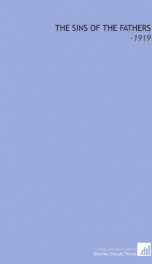
the sins of the fathers
Series:
Unknown
Year:
Unknown
Raiting:
4/5
Originally published in 1919. This volume from the Cornell University Library's print collections was scanned on an APT BookScan and converted to JPG 2000 format by Kirtas Technologies. All titles scanned cover to cover and pages may include marks notations and other marginalia present in the original volume.
Show more
add to favoritesadd In favorites
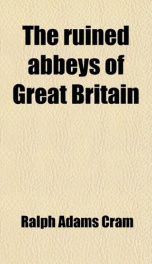
the ruined abbeys of great britain
Series:
Unknown
Year:
Unknown
Raiting:
4/5
Purchase of this book includes free trial access to www.million-books.com where you can read more than a million books for free. This is an OCR edition with typos. Excerpt from book: LINDISFARNE AND WHITBY FROM the low-lying meadows of Somerset to the wild and wind-swept northern cliffs that frown on the German ocean is a long step, but here also are the beginnings of things to be; not so old by five hundred years, nor yet so meshed in legends and visions, and, if you like, fantastic fables, but venerable indeed, and deeply significant. Here, where the sudden cliffs break down into the ever- thundering sea and crabbed islands lift bravely out of tempestuous breakers, lashed by tumultuous winds and drenched by sea-spume and swirling fog, here were established the first outposts of the Catholic Faith in the North, in the year of our Lord 635, when Oswald, King of Northumbria, called St. Aidan from his monastery of St. Columba. Ten years before, Oswald's uncle, Eadwine, asking the hand of the daughter of the Christian King of Kent, had gained with his queen a Christian bishop and missionary in the person of St. Paulinus, one of the companions of St. Augustine, but sudden war had extinguished the flickering flame, and St. Aidan came to kindle it anew. It was a wild and barbarous land and a wild and barbarous society into which he came. It is told that the first missionary bishop from lona became discouraged within a year, and returned to his monastery, declaring the Northumbrians invincible iri their heathenism. Up rose on the word a monk named Aidan, crying, "Was it their stubbornness, or your severity?" Whereupon the entire chapter acclaimed him as the true Bishop of Northumbria, which he became indeed, and a saint as well. Barbarous the people undoubtedly were, but King Oswald was a man of splendid character, and the alliance of saint and king was invincible. Backed by royal favour and heartened by royal co-operation, Aidan, drawn by love of his isl...
Show more
add to favoritesadd In favorites

the nemesis of mediocrity
Series:
Unknown
Year:
Unknown
Raiting:
5/5
This volume is produced from digital images created through the University of Michigan University Library's preservation reformatting program. The Library seeks to preserve the intellectual content of items in a manner that facilitates and promotes a variety of uses. The digital reformatting process results in an electronic version of the text that can both be accessed online and used to create new print copies. This book and thousands of others can be found in the digital collections of the University of Michigan Library. The University Library also understands and values the utility of print, and makes reprints available through its Scholarly Publishing Office. --This text refers to an alternate Paperback edition.
Show more
add to favoritesadd In favorites

the ministry of art
Series:
Unknown
Year:
Unknown
Raiting:
5/5
Originally published in 1914. This volume from the Cornell University Library's print collections was scanned on an APT BookScan and converted to JPG 2000 format by Kirtas Technologies. All titles scanned cover to cover and pages may include marks notations and other marginalia present in the original volume.
Show more
add to favoritesadd In favorites

the great thousand years
Series:
Unknown
Year:
Unknown
Raiting:
5/5
Purchase of this book includes free trial access to www.million-books.com where you can read more than a million books for free. This is an OCR edition with typos. Excerpt from book: TEN YEARS AFTER THE Great Thousand Years" was written in the winter of 1907-8, and in December 1910 it was published in " Pax," the magazine of the Benedictine monks of Caldey in South Wales. In giving it now for printing in more permanent form, I am impelled to provide a commentary drawn up in the light of war, and to call it " Ten Years After." As for the article itself, it is reprinted exactly in its original form, with only a few verbal corrections. When it appeared there was, in the circumstances of time, no shadow of justification either for its assumptions or the deductions that followed therefrom, a fact that was not concealed from the author by numerous and plausible critics. The events of the last three-and- a-half years have in some cases revised original criticism, but thus far the primary inference, the necessity for a new outpouring of the monastic impulse and a return to Mediaeval models for the basis of a new life, is still rejected with general unanimity. When "The Great Thousand Years" was written, neither I nor anyone else looked forward to the possibility of a world-war as a possible joint crowning and destruction of that " modern civilization " in which we had no confidence and for which we expressed no admiration. Even Fr. Figgis in his " Civilization at the Cross Roads," and Mr. Chesterton in his "What's Wrong with the World " (both published in this same year of 1910), indicate no vision of possible war as the last act of the five-century drama. That the curtain had risen on a denouement that was bound to be tragical in its universal destruction, after the fashion both of Classical and Elizabethan drama, was clear, but the motive and the progress of events were buried in profound mystery. Four years later we were justified in our anticipations, eve... --This text refers to an alternate Paperback edition.
Show more
add to favoritesadd In favorites
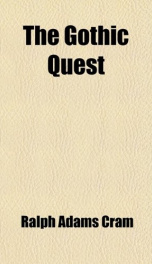
the gothic quest
Series:
Unknown
Year:
Unknown
Raiting:
4/5
Purchase of this book includes free trial access to www.million-books.com where you can read more than a million books for free. This is an OCR edition with typos. Excerpt from book: THE GOTHIC ASCENDENCY TT THAT, in exact terms, do we mean by this phrase, "The Gothic Ascendency?" We realize, of course, that after a certain date a particular form of architectural design came most conspicuously into being, in a few years superseding the rough, round-arched style that had halted along with rather indeterminate results through several centuries. We know that this new and radical mode of building became popular almost instantly, quickly discredited all that had gone before, was accepted by all the nations of Europe, and for three centuries was the only recognized mode of architectural expression, changing constantly, it is true, developing always, taking on varied qualities and aspects in accordance with the ethnic traditions and racial temper of the several peoples that accepted it, yet remaining always a definite style in spite of its mutations, an easily recognized type, whether it is reflected in the green Venetian lagoons or in the ripples of the English rivers; whether it dominates the level fields of the He de France or becomes one with the crags of the Rhine. Now what does this signify, this sudden and victorious advent of a style apparently without traceable ancestry? for in its structrual methods, its schemes of composition, the development of its detail, the genius of its ornamentation, it is utterly unlike anything that had gone before, confessing in its ancestry far less kinship with the Norman, Romanesque, and Lombard it had discomfited and destroyed, than was so easily traceable between Greek and Egyptian, Byzantine and Roman, for example. Hitherto each recognized new style had been but a development, an elaboration of some immediate prototype, tinged by new blood perhaps, but essentially the same. Even the adoption of the arch by the Roman...
Show more
add to favoritesadd In favorites
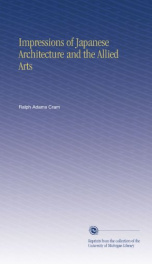
impressions of japanese architecture and the allied arts
Series:
Unknown
Year:
Unknown
Raiting:
4/5
This volume is produced from digital images created through the University of Michigan University Library's preservation reformatting program. The Library seeks to preserve the intellectual content of items in a manner that facilitates and promotes a variety of uses. The digital reformatting process results in an electronic version of the text that can both be accessed online and used to create new print copies. This book and thousands of others can be found in the digital collections of the University of Michigan Library. The University Library also understands and values the utility of print, and makes reprints available through its Scholarly Publishing Office.
Show more
add to favoritesadd In favorites

heart of europe
Series:
Unknown
Year:
Unknown
Raiting:
5/5
Originally published in 1918. This volume from the Cornell University Library's print collections was scanned on an APT BookScan and converted to JPG 2000 format by Kirtas Technologies. All titles scanned cover to cover and pages may include marks notations and other marginalia present in the original volume.
Show more
add to favoritesadd In favorites

great thousand years written in the year 1908 and first printed in pax the mag
Series:
Unknown
Year:
Unknown
Raiting:
5/5
Show more
add to favoritesadd In favorites

farm houses manor houses minor chateaux and small churches from the eleventh
Series:
Unknown
Year:
Unknown
Raiting:
4/5
Many of the earliest books, particularly those dating back to the 1900s and before, are now extremely scarce and increasingly expensive. We are republishing these classic works in affordable, high quality, modern editions, using the original text and artwork.
Show more
add to favoritesadd In favorites
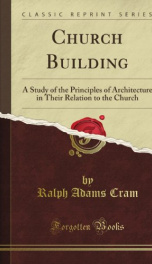
church building a study of the principles of architecture in their relation to
Series:
Unknown
Year:
Unknown
Raiting:
4/5
INTRODUCTIONArt is the measure of civilization. We may assert such claims as we choose, if we have not an art that is instinctive, the natural expression of a healthy people, then we protest in vain. We do not possess a genuine, vital civilization.Not that we must be able to boast of men so great in the various fields of art that they have won for their names an earthly immortality. Such are rather a sign of a time without art than of one wherein art is universal. The great painters of Venice came just as that brilliant epoch of civilization was swerving toward its fall. Turner was born in the dark ages of modern England. Wagner and Brahms were as voices crying in the wilderness. There have always been dazzling personalities that flashed out of the surrounding gloom like the writing on the wall at the great king's feast; hut they are not manifestations of healthy art. They are phenomena. The sanest, most wholesome art is that which is the heritage of all the people, the natural Table of Contents CONTENTS; I'AGE; I Introduction i; II The Country Chapel 13; III The Village Church 33; IV The City Church 69; V The Chancel and its Fittings 89; VI Chapels, Baptisteries, and Sacristies 111; VII Decoration and Stained Glass 127; VIII The Altar 151; IX The Cathedral 171; X Conclusion 217; XIAbout the Publisher Forgotten Books is a publisher of historical writings, such as: Philosophy, Classics, Science, Religion, History, Folklore and Mythology.Forgotten Books' Classic Reprint Series utilizes the latest technology to regenerate facsimiles of historically important writings. Careful attention has been made to accurately preserve the original format of each page whilst digitally enhancing the difficult to read text.
Show more
add to favoritesadd In favorites
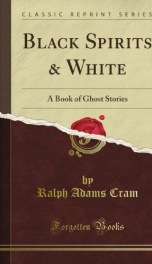
black spirits white a book of ghost stories
Series:
Unknown
Year:
Unknown
Raiting:
4/5
This book belongs to the pen of a famous American architect and author known for his amazing buildings often performed in a Gothic style and for his wonderful stories. Ralph Adams Cram (1863-1942) is the author of such interesting books as Black Spirits and White: A Book of Ghost Stories (1895), Impressions of Japanese Architecture (1905), Excalibur: An Arthurian Drama (1909), Heart of Europe (1916), The Substance of Gothic (1917), Towards the Great Peace (1922) and My Life in Architecture (1937). Black Spirits and White: A Book of Ghost Stories is recognized as one of his best books which contains six ghost stories. The first one called "No. 252 Rue M. Le Prince" is a classical story about black magic. The other stories describe the adventures of two travelers in Europe. On their way they meet ghosts, nuns, dead counts etc. The book will never make you bored.
Show more
add to favoritesadd In favorites

Towards the Great Peace
Series:
Unknown
Year:
Unknown
Raiting:
4/5
Purchase of this book includes free trial access to www.million-books.com where you can read more than a million books for free. This is an OCR edition with typos. Excerpt from book: Ill THE SOCIAL ORGANISM C OCIETY, that is to say, the association in life of men, women and children, is the fundamental fact of life, and this is so whether the association is of the family, the school, the community, industry or government. Everything else is simply a series of forms, arrangements and devices by which society works, either for good or ill. Man makes or mars himself in and through society. He is responsible for his own soul, but if he sees only this and works directly for his soul's salvation, disregarding the society of which he is a part, he may lose it, whereas, if he is faithful to society and honourably plays his part as a social animal with a soul, he will very probably save it, even though he may for the time have quite ignored its existence. Man is a member of a family, a pupil under education, a worker and a citizen. In all these relationships he is a part of a social group; he is also a component part of the human race and linked in some measure to every other member thereof whether living or dead. Into every organization or institution in which he is involved during his lifetimefamily, school, art or craft, trade union, state, churchenters the social equation. If society is ill organized either in-theory or in practice, in any or all of its manifestations, then the engines or devices by which it operates will beimpotent for good. Defective society cannot produce either a good fundamental law, a good philosophy, a good art, or any other thing. Conversely, these, when brought forth under an wholesome society, will decay and perish when society degenerates. In its large estate, that is, comprehending all the minor groups, as a nation, a people or an era, society is always in a state of unstable equilibrium, tending either toward better or worse...
Show more
add to favoritesadd In favorites
What readers are saying
What do you think? Write your own comment on this author!
write a commentif you like Cram Ralph Adams try:
readers also enjoyed
What readers are saying
What do you think? Write your own comment on this author!
write a commentGenre
if you like Cram Ralph Adams try:
readers also enjoyed
Do you want to read a book that interests you? It’s EASY!
Create an account and send a request for reading to other users on the Webpage of the book!

